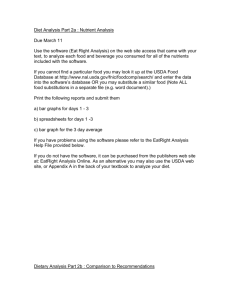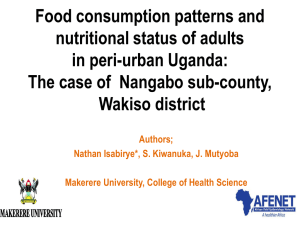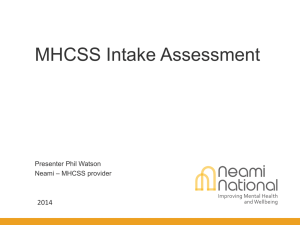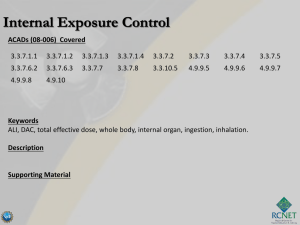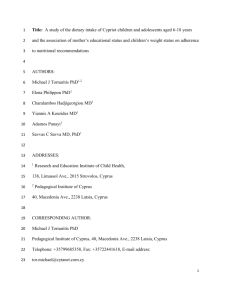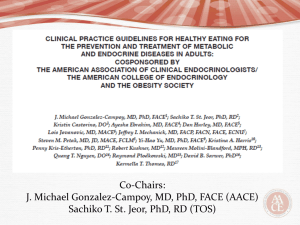PowerPoint Presentation - International Life Sciences Institute
advertisement
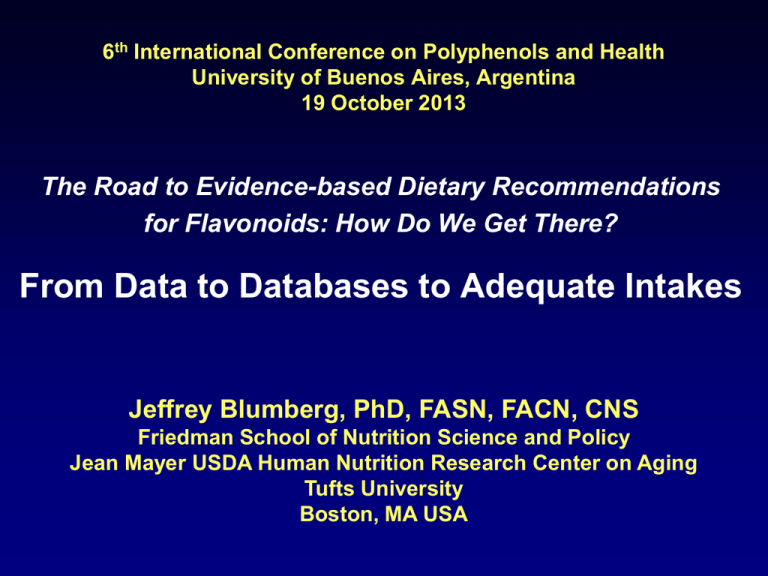
6th International Conference on Polyphenols and Health University of Buenos Aires, Argentina 19 October 2013 The Road to Evidence-based Dietary Recommendations for Flavonoids: How Do We Get There? From Data to Databases to Adequate Intakes Jeffrey Blumberg, PhD, FASN, FACN, CNS Friedman School of Nutrition Science and Policy Jean Mayer USDA Human Nutrition Research Center on Aging Tufts University Boston, MA USA Disclosures for: Jeffrey B. Blumberg AFFILIATION FINANCIAL INTERESTS CORPORATE ORGANIZATION Grants/Research Support None Scientific Advisory Board Herbalife, GlaxoSmithKline, Pharmavite Speakers Bureau None Stock Shareholder None Other Financial or Material None Support/Honorarium Why Develop Reference Values for Flavonoids? • Provide consumers with guidance about healthy food choices via education and food product labeling • Provide the nutrition industry with definitions to guide innovative product development as well as truthful and non-misleading communications about products Knowing is not enough; we must apply Willing is not enough; we must do. - Johann Wolfgang von Goethe (1749-1832) IOM FNB. DRI Coverpage 2000 From Data to Databases Data analytical methods experimental design nomenclature quality control reporting From Data to Databases Data Food Composition Analysis cultivar environment geography post-harvest preparation sample size replication From Data to Databases Data Food Composition Analysis Database Classification and Organization accuracy analytical methodology aglycone vs. glycone nomenclature incompleteness Flavonoid Databases USDA ARS Database for the Flavonoid Content of Selected Foods USDA ARS Database for the Proanthocyanidin Content of Selected Foods USDA ARS Database for the Isoflavone Content of Selected Foods European Food Information Resource (EuroFIR) Bioactive Substances in Food Plants Information System (BASIS) French National Institute for Agricultural Research Phenol-Explorer From Data to Databases Data Food Composition Analysis Database Classification and Organization Dietary Intake assessment tools bioavailability reliability Dietary Intake of Polyphenols in French Adults SU.VI.MAX Pérez-Jiménez et al. Am J Clin Nutr 2011 From Data to Databases Data Food Composition Analysis Database Classification and Organization Dietary Intake Validation of Exposure matrix (blood, urine) pharmacokinetics single vs. multiple exposures Urinary (not Dietary) Polyphenols Are Associated with Decreased Mortality InCHIANTI Study Total Urinary Polyphenols Zamora-Ros et al. J Nutr 2013 Total Dietary Polyphenols From Databases to Function Range of Intake usual national vs. international duration in cohort From Databases to Function Range of Intake Function maintenance of physiological function modification of intermediary biomarkers reduction of disease risk Cocoa Flavanols Reduce Prehypertension Systolic Blood Pressure RCT: • 15 trial arms • 2 wk • 18-70 y • 168-902 mg flavanols • 30-1008 mg polyphenols Ried et al. BMC Med 2010 Diastolic Blood Pressure • n=156,957 • 25-75 y • 14 y F/U Intake mg/d • Q1= 5.7 • Q5= 21.9 Multivariate Relative Risk Anthocyanins Reduce the Risk of Incident Hypertension NHS II NHS I HPFS Pooled RR: 0.92 95% CI:0.86-0.98, P<0.03 Quintiles Cassidy et al. Am J Clin Nutr 2011 Intake of Anthocyanins and Polymers Reduce the Risk of Myocardial Infarction Nurses Health Study II Intake, mg/d Anthocyanins Polymers* 1 2 3 4 5 2.5 5.0 8.4 13.5 25.1 1.0 -- 0.80 0.60-1.07 0.71 0.52-0.97 0.85 0.63-1.15 0.68 0.49-0.96 65.4 110.1 160.9 256.7 578.6 1.0 -- 0.89 0.66-1.19 0.80 0.59-1.08 0.64 0.46-0.89 0.83 0.62-1.11 * Polymers: proanthocyanidins, theaflavins, thearubigins Cassidy et al. Circulation 2013 P 0.047 0.051 • n=93,600 • 25-42 y • 18 y F/U From Databases to Function Range of Intake Function Flavonoid Reference Value frameworks for reference and risk FAO/WHO Codex Alimentarius U.S. Institute of Medicine From Function to Reference Values IOM framework – DRI: EAR, AI, RDA, UL Codex framework – NRV Adequate Intake: When sufficient evidence is not available to set an EAR, the AI is a goal for the intake of individuals. The AI is expected to cover the needs of most all people. From Function to Reference Values IOM Tolerable Upper Intake Level (UL): The highest level of daily intake likely to pose no risk of adverse health effects to almost all individuals in the general population. FAO/WHO Highest Observed Intake (HOI): Where no toxicity has been observed, the highest dose tested that can be confidently concluded as safe. Le mieux est l'ennemi du bien The perfect is the enemy of the good - Voltaire (François-Marie Arouet) 1694-1778
